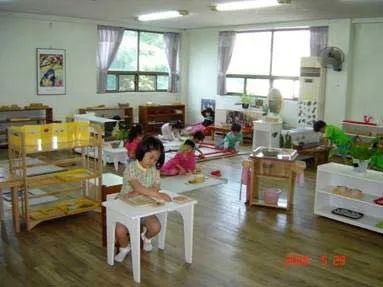
I got this plant as a tiny little shoot no more than three inches high a little over two years ago. I cared for it and it grew nice and strong, but not very big. I had this feeling that it needed space for its roots to expand. I got a larger bowl and some potting soil and decided to transplant it. It looked very sad for a few weeks afterwards, and I watered it and told it how happy it would be after it adjusted to its new home.
Once it got settled in the new soil, it began growing really fast and looking strong and hardy. I realized that it had simply needed room to stretch and grow. It required freedom of movement. As you can see from the photo, it has sent out many new shoots.
Plants and Children
It made me think of a child coming into a Montessori classroom or coming home after school to a child-friendly place, finding activities of genuine interest and room to grow. The prepared environment encourages the child to send out shoots of interest and ability that a more contained environment does not encourage.
The same evening I began writing this, a friend sent me a quotation from an Indian man who came to the United States in the late 1800s to teach.
You cannot teach a child any more than you can grow a plant…you can only help. It is a manifestation from within; the child develops its own nature—you can only take away obstructions. Swami Vivikenanda
His words are very similar to Montessori’s words when she tells us that we need to remove obstacles to the child’s development in order to allow spontaneous development from within.
Removing Obstacles
In The Secret of Childhood, Maria Montessori writes:
A child's psychic life is so fluid that its natural manifestations can completely disappear in an unfavorable environment and be replaced by others. Before elaborating any system of education, we must therefore create a favorable environment that will encourage the flowering of a child’s natural gifts. All that is needed is to remove the obstacles. And this should be the basis of, and point of departure for, all future education.

Montessori removes obstacles by placing materials on low shelves in complete sets so all that the child needs for a given activity is ready and waiting for him. You can easily set up a low shelf in your home and make various activities child-ready. Many moms do this in their kitchens with simple practical life and art activities so that, when they need to be engaged in meal preparation, there is something for the child to do as well.

A low ironing table for your home can be a great point of interest.


Here is a Montessori lesson in banana peeling and cutting from a school in South Korea. If you look carefully, you can see that everything the child needs for cutting, serving, and cleaning up is part of the lesson. This permits the child to choose the lesson when she is interested, do it, and then clean up, being independent in all her actions.
The more your child's school and your home answer your child's needs, the happier you and your child will be!





















